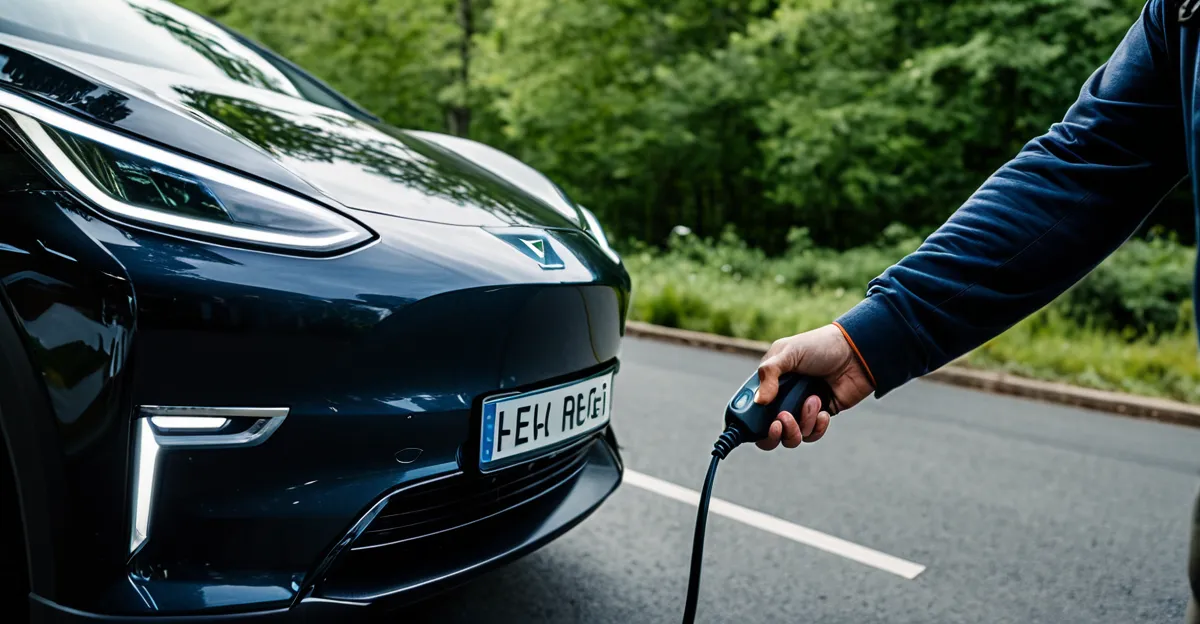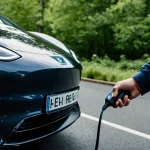Battery Range Limitations and Range Anxiety
Electric vehicles (EVs) continue to face significant challenges related to battery range limitations and the resulting range anxiety. The EV battery range issues impact both daily driving habits and long-distance travel, restricting the practical use of electric cars for many drivers.
The limited electric car distance achievable on a single charge means drivers must carefully plan routes and charging stops, especially for trips beyond typical urban commutes. This limitation introduces uncertainty and stress, known as range anxiety—the fear of depleting the battery before reaching a destination or charging station. Range anxiety remains a critical barrier to widespread EV adoption, as it can discourage potential buyers who prioritize convenience and reliability.
In parallel : What are the consumer trends driving change in the UK car market?
Several factors influence EV range, intensifying driving limitations. Weather conditions are a major contributor; cold temperatures reduce battery efficiency and capacity, sometimes shortening electric car distance by up to 40%. Similarly, extreme heat can degrade battery performance. Additionally, driving style plays a significant role. Higher speeds, aggressive acceleration, and frequent use of climate control systems drain the battery more quickly, further limiting range.
Understanding these range constraints helps manage expectations and mitigate anxiety. Manufacturers are improving battery technology and vehicle efficiency to extend driving range, easing concerns. Moreover, awareness of factors such as weather impact and driving behavior empowers drivers to optimize battery usage and plan accordingly, reducing the psychological burden of range anxiety and promoting confidence in EVs.
Also read : What strategies are UK car manufacturers using to enhance vehicle connectivity?
Charging Infrastructure Challenges
Reliable and widespread access to EV charging stations remains a key hurdle in addressing EV battery range issues and alleviating range anxiety. Although the number of public chargers is increasing, their uneven distribution often leaves drivers scrambling to find an available station, especially in rural areas or during high-demand periods. This scarcity amplifies EV driving limitations by forcing detours or longer wait times to recharge, which can deter drivers from using electric cars for longer trips.
Home charging offers a more convenient alternative for many EV owners, but it is not without problems. Apartment dwellers or urban residents may lack dedicated parking with charging capabilities, limiting their ability to rely on home chargers. This further constrains electric car distance capabilities in daily use and heightens range anxiety since drivers cannot start each day with a fully charged battery.
Additionally, compatibility and payment complications across various charging networks add friction to the charging experience. Different stations may require separate apps or membership accounts, creating confusion and delays. This fragmentation impacts drivers’ confidence, reinforcing the perception of EV battery range issues as inconvenient and unpredictable.
In summary, despite progress, the reliability of charging infrastructure directly influences how drivers cope with EV battery range issues. Addressing public charging availability, improving home charging access, and streamlining network interoperability are critical to reducing EV driving limitations and mitigating range anxiety.
Charging Time and Convenience
Charging times vary significantly depending on the type of charger used, directly affecting driver experience with EV charging speed. Home chargers typically provide slower charging, often requiring several hours to fully charge an electric vehicle, which suits overnight or extended parking. Workplace chargers offer moderate speeds, balancing convenience during working hours but may still require planning if driving distances are long.
Fast charging stations drastically reduce charging wait times, replenishing battery levels in under an hour. However, these stations remain limited in number and are often concentrated in urban or high-traffic areas. During long-distance travel or road trips, the availability and reliability of fast chargers become crucial, as slow charging issues can cause significant delays and inconvenience.
Technological constraints limit the potential of fast-charging networks. Battery chemistry and thermal management restrict how quickly batteries can safely accept high rates of charge without accelerating degradation. Moreover, not all EV models support the highest charging speeds, which can lead to inconsistent charging experiences among users. Improving charging infrastructure and vehicle compatibility is essential to enhance EV charging speed and reduce charging wait times that currently contribute to EV driving limitations.
Battery Degradation and Replacement Costs
Over time, EV battery lifespan inevitably declines due to battery degradation, which reduces the vehicle’s effective range and performance. This gradual decline occurs as lithium-ion cells lose capacity from repeated charging cycles and environmental factors like extreme temperatures. The loss in battery health can translate to noticeable reductions in electric car distance, compelling some drivers to adjust their expectations and driving habits.
Understanding how battery health changes over time is crucial because it directly impacts the convenience and reliability of EVs. Typical degradation rates vary but often result in about a 20% to 30% capacity loss after eight years or approximately 100,000 miles. This means that after this period, drivers might experience increased EV driving limitations, such as needing more frequent charges and facing heightened range anxiety.
When it comes to EV battery replacement costs, these can be a significant financial consideration. Battery packs are among the most expensive components of electric vehicles and may cost several thousand dollars to replace, depending on the make and model. However, many manufacturers offer warranties that cover battery health for 8 years or around 100,000 miles, which helps ease concerns over early replacements.
Proactively monitoring battery health and following recommended charging practices can slow degradation, extending the vehicle’s usability and value. As technology advances, newer battery chemistries and improved thermal management systems aim to enhance longevity and reduce long-term ownership issues associated with battery degradation and replacement.




